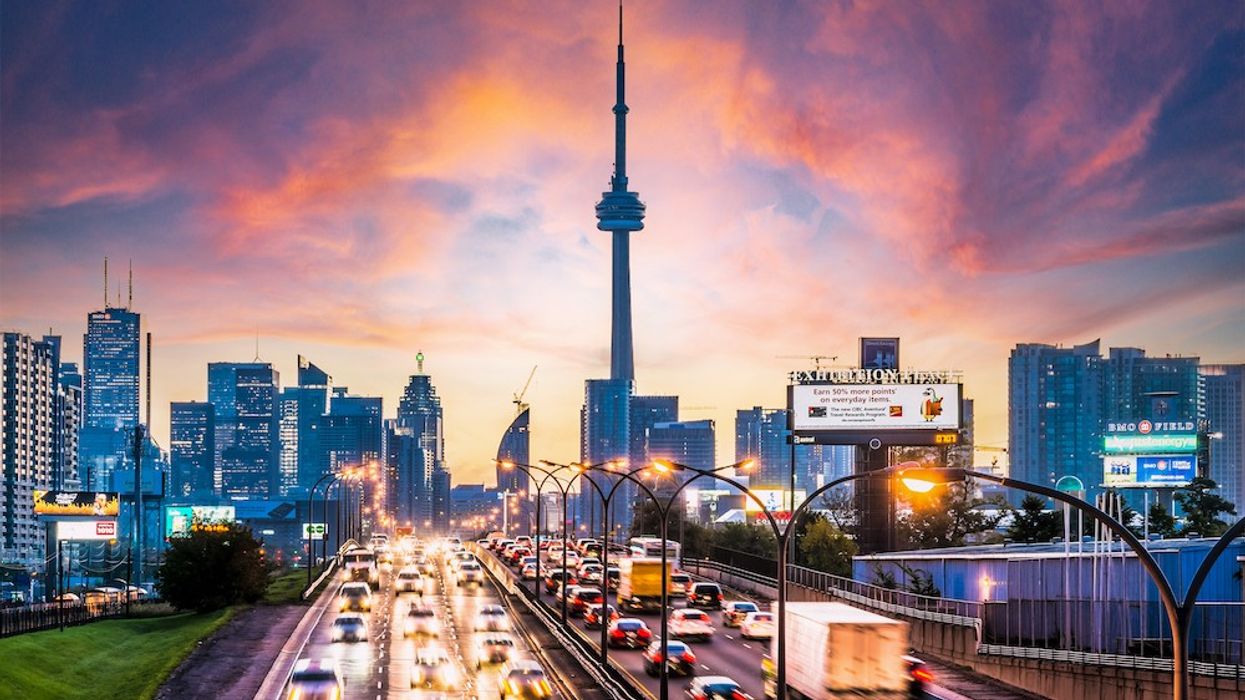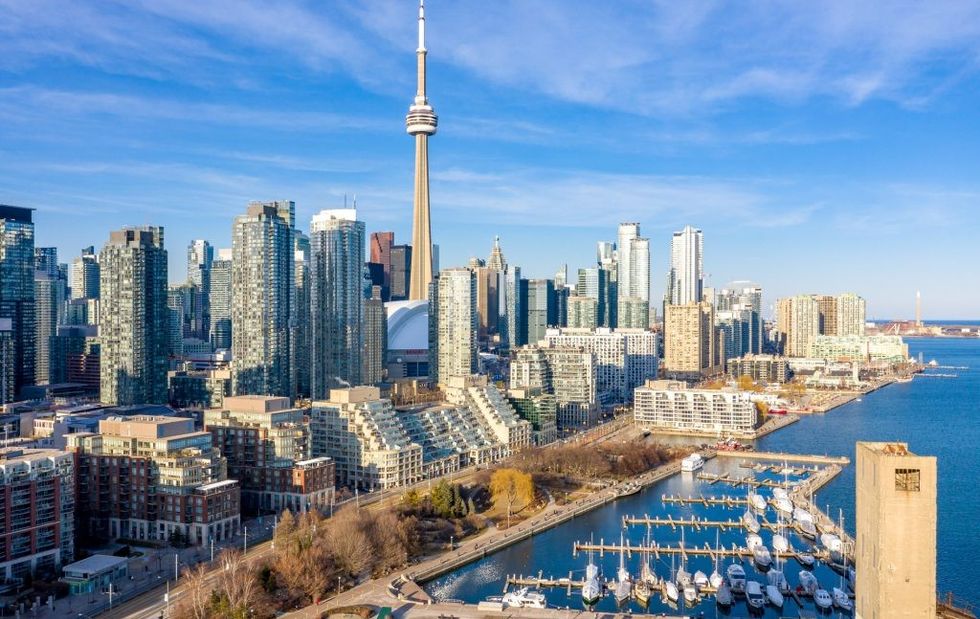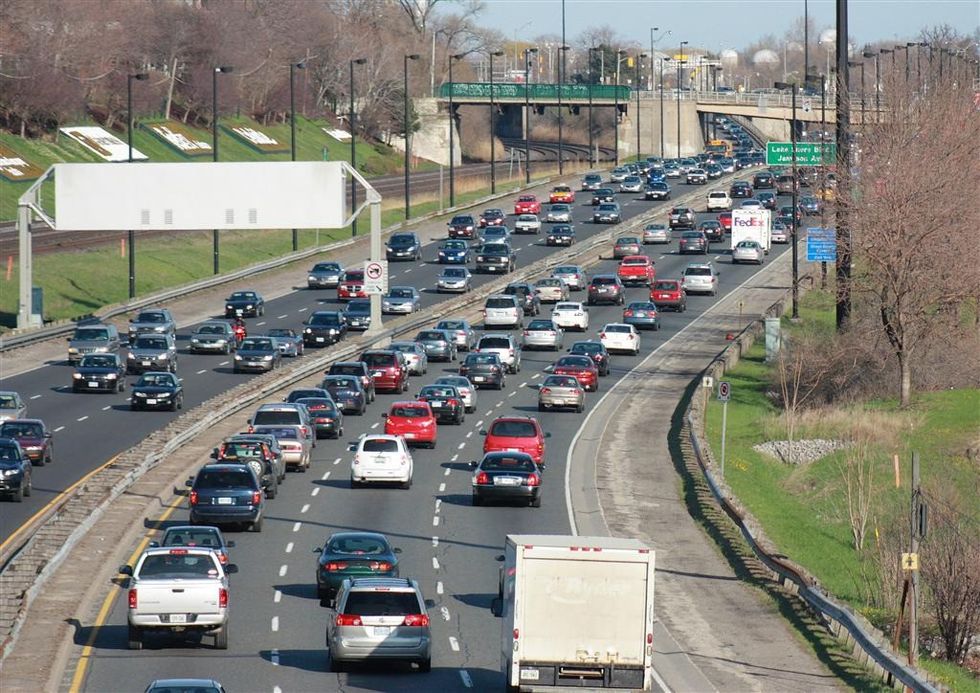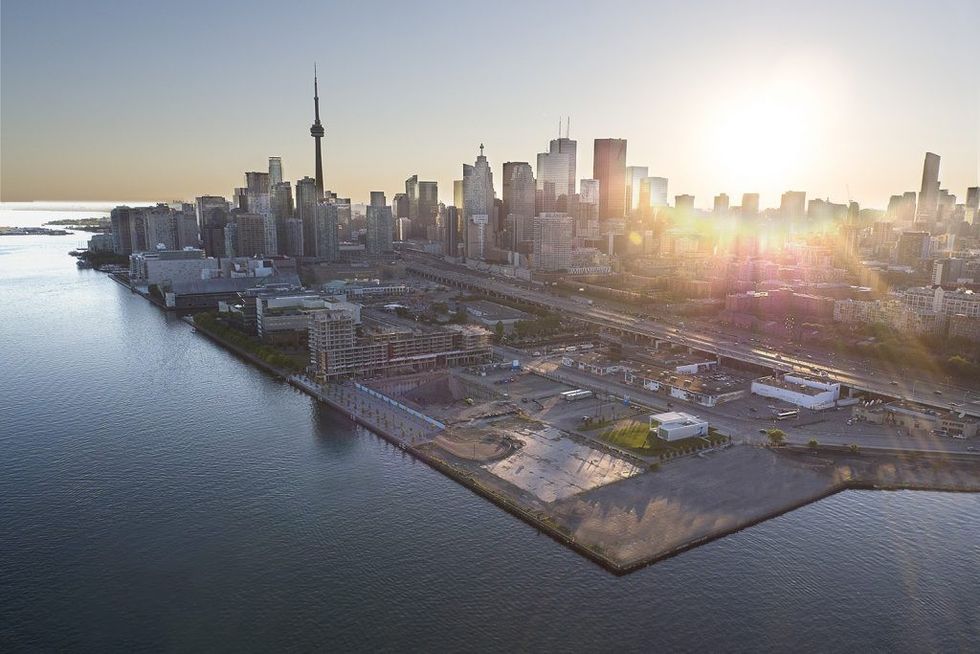If there was any doubt that Toronto is alive again, one needs only to drive across the city at peak times, especially if there’s a sporting event or concert happening (or -- god help us -- both at once), to be convinced.
The return of the city after two years of practically shutting down also marks the return of its maddening traffic in all of its profanity-provoking glory.
And, as we only increase in density one shiny new towering condo at a time, things are going to become more of a challenge on the congestion front -- especially in the coming years as we build the upcoming Ontario Line. Construction on the new transit line officially broke ground in March.
So, last week, Toronto City Council candidate Rocco Achampong (Ward 10: Spadina-Fort York) announced that he wants to impose a congestion fee for visitors to ward in order to reduce traffic.
The Spadina-Fort York ward encompasses a large portion of the downtown core, including the construction-filled Financial District, The Esplanade, Distillery District, Harbourfront, and parts of the notoriously congested Gardiner Expressway.
Achampong says Toronto should take a page from London’s book and implement a fee for non-residents and non-local business owners and workers accessing the ward.
“The idea for a pedestrian zone came about after law school. I was travelling through Europe's capital cities and jotting down little ideas from my journeys of things we needed for Toronto,” Achampong tells STOREYS. “And I was always fascinated by the congestion zone charge in the city of London. I have been back to London about 80 times since and always sort of appreciate the focus on limiting traffic and extracting a fee for what is a terrible inconvenience -- congestion.”
Aside from the congestion factor, he says that the revenue generated from a congestion fee can help make cities better. “In 2021, the congestion zone charge netted a revenue of $1.2B pounds, in a zone much smaller than I would imagine we would have,” says Achampong. “If we were to use the price point in England over a much wider zone, the revenue we should be expecting should be $2B.”
Achampong says a congestion fee would generate revenue to enhance the ward with more green space, improve accessibility for various city-owned and operated community spaces, clean up city streets with improved garbage disposal options and collection, and improve public transportation systems.
“Spadina-Fort York has not only the highest population density, but also the highest usage of roads in the City of Toronto. As destination for work and play, residents incur smog, smoke, pollution, noise, diminished air quality and dirty, congested streets,” says Achampong.
While all sounds positive on the urban improvement front, at a time of fragility for small businesses, an inevitable fear is they will take an even bigger hit in an already challenging climate.
“There are positive elements to Achampong’s proposed congestion tax,” says Ryan Mallough, VP of legislative affairs for the Canadian Federation of Independent Business (CFIB). “For example, the fact that it excludes local residents, business owners, and employees is a good thing to address. If it didn’t, it would have been a major immediate concern for small businesses in terms of everything from making it more expensive to get to work and for deliveries.”
But Mallough is concerned that the congestion tax could limit foot traffic that small businesses want -- especially in the wake of perpetual lockdowns that hit Toronto businesses hard. “We have seen a significant shift in foot traffic in the downtown core coming off of the pandemic, and there this expectation that people would return to office buildings. But I think the hybrid model is here to stay to some extent,” says Mallough. “So, by implementing the tax, are we discouraging would-be customers from coming down? Small businesses don’t need anything that will exasperate existing challenges or delay recovery.”
But Achampong says there’s no proof this will be the case.
“One assumes that the traffic that’s resulted in congestion is the result of people patronizing the businesses,” says Achampong. “But that’s not true; people are using Spadina-Fort York as entry and exit points -- a beat off of the Gardiner or the DVP. They come after major events. They aren’t stopping here for the businesses; if anything, they obstruct the businesses.”
He turns his attention to cities that have made the congestion fee move. “In Singapore and London, it was sort of this ‘doom say’ mentality about how a congestion fee would impact businesses and nothing of the sort materialized,” says Achampong. “If someone is going to patronize a business, they’re going to patronize a business and the car traffic is not going to affect that.”
Achampong points to the controversial King Street Pilot Project, which has now been made permanent, as an example of a successful initiative to limit car traffic that hasn’t negatively impacted businesses. “The restaurants on King Street are still packed,” he says.
But rather than focus on congestion, Naama Blonder, an urban planner at Smart Density and a Spadina-Fort York resident herself, says we need to focus more on the housing crisis.
“Achampong says that the congestion is the worst thing in this ward; I think the housing crisis is the worst thing in the Spadina-Fort York ward -- and in the city,” says Blonder. “When it comes to tax, I don’t think a short-term solution is what we need. The parking minimums they have in new condos will help in the long-term to use the car less and less because we won’t have parking associated with every unit -- just like in New York City, where they implemented this decades ago.”
Blonder says we need to focus on our long-term policy when it comes to housing and congestion. “It’s about investing in transit and making it accessible for everyone,” she says. “It’s about building more housing near these communities so that people can actually have that 15-minute neighbourhood and live where they work and enjoy amenities where they work. So, it’s much more of a long-terms strategy. Right now, the downtown core is walkable, it’s pedestrian-friendly -- I just don’t think congestion is the most pressing issue -- we have others to take care of first.”
That’s not to say that measures to decrease the use of the car of the aren’t important, says Blonder. “As our policy, in our developments, we make sure that we have enough transit and we don’t encourage the use of the car,” says Blonder. “The goal is to move to a more sustainable city. For me, a tax isn’t the most needed move right now.”
Of course, creating more much-needed transit lines -- and subsequent five-minute neighbourhoods -- only compounds traffic congestion with its maddening construction.
Mallough lives at Eglinton and Dufferin -- on the upcoming, infamously construction-riddled LRT line -- and knows the daily struggle all too well. As he aptly highlights, the phrase ‘avoid Eglinton' has become all too common.
“Toronto’s traffic challenges are a problem and the construction has caused many issues,” says Mallough. “There were businesses along the LRT construction zones on Eglinton, who went from delay after delay. There were businesses that were already closing because of the construction disruption, then we went into a global pandemic that closed doors. Then, we came out of a pandemic and back into a construction zone. It ended a lot of businesses. Knock on wood, the LRT is going to be done soon.”
But if it’s not the LRT, it’s more construction, especially with the Ontario Line and perpetual road work.
“It’s absolutely destructive,” says Mallough of the LRT construciton. “When it’s finished, it will be great. We all benefit from city transit projects when when it’s done. But that time in between is extremely frustrating for businesses. So, while the traffic needs to be addressed, it needs to be done so in a way that the means in which it is isn’t causing more disruption and making people want to avoid areas even more.”
On the construction mitigation front, Mallough highlights that are practices in place in cities like Montreal and Quebec City that compensate businesses for the disruptions, and he would like to see Toronto embraces it too -- especially as we move into the coming decade. “Metrolinx putting up a piece of Bristol board saying ‘hey these businesses are still open buried behind this’ is a pretty minimal effort given what the businesses are going through,” he says.
Mallough also has concerns about how the congestation fee will be administered and surrounding its practicality in terms of achieving its goals.
In terms of implementation, Achampong points to various kinds of technology. “We have the entry/exit point technology, which is being used on the 407; we have the red light speed camera technology, which basically tickets you without ever having to meet you; and there is a specific congestion zone technology they use in the UK that also filters information, calibrates charges and processes exemptions and discounts,” says Achampong.
A the end of the day, the congestion fee idea is a central one to his campaign as we lead up to the municipal election -- and he's not wavering.
“If you don’t think this should be done, you do not live in Spadina-Fort York,” says Achampong.
























